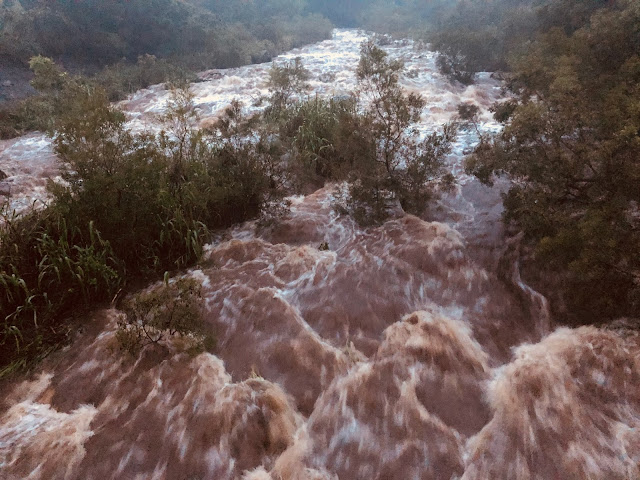 |
| A small footprint individual wastewater system that could go next to Pāhala houses currently served by illegal gang cesspools. Photo from County of Hawai'i |
She said the county already has plans for new collection lines should a sewage treatment plant be approved. However, she said, “This will have effects in the community right? We’re going to have to dig up roads to lay lateral lines down. Some of you have laterals in front of your homes the plantation laid before they left.”
Iokepa-Moses said, that with a sewer, the plan would be to "have a direct collect from our home to the line in front of. your house to the sewer collection. You don’t want county government people walking through property and trying to maintain the most direct line.”
For the sewage treatment plant option, the EPA would have to agree to the time it would take to build it and government has promised to pay for the cost of all options, with no cost to the homeowners.
Iokepa-Moses explained that individual wastewater systems - septic tanks - for each yard could be done more quickly at less cost and would not use the existing sewer lines from people’s homes that are probably too fragile for future use. She acknowledged that individual wastewater systems could require setbacks from trees and property lines and possible removal of some improvements in yards, like rock walls and other structures but that the county would replace. She said that leach fields would be replanted with grass.
Several options for building individual wastewater systems were presented including the county hiring contractors for all the work and maintaining the systems, leaving the homeowners with monthly sewer fees, currently $52. Another was for the county to engineer the systems and give vouchers to the homeowners to hire their own contractors. The county would oversee the work to make sure it complies. The homeowner would not be responsible for sewer fees but would be responsible for pumping the septic tank an average of three to five to ten years and otherwise inspecting it and maintaining it.
Iokepa-Moses said that all options except for the voucher program would be “a heavy lift.” With the voucher program, “We will partner with you but mainly the homeowners will be able to steer that boat from the contractors and what they’re doing on the property.”
Homeowners not tied to the old sugar plantation cesspools who have their own cesspools are required to switch over to sewer or septic by 2050. The county said it would pay for those with cesspools in the area of the old gang cesspool collection system to convert, whether it be to a new sewer system or individual wastewater system. One speaker asked whether it was fair to give free septic or sewer to those with individual cesspools who live in the area and not pay for cesspool conversions for the rest of the community. Iokepa-Moses said that future funding would be sought to help those outside the old gang cesspool area.
County of Hawai‘i Closing the gang cesspools will bring the county into compliance with the Federal Safe Drinking Act or face EPA fines of $300 to $1000 a day. The county is also working on an environmental information document for the project for the EPA, which is to show economic and other impacts on the community and environment connected to the options. Listen to an audio of the meeting at https://tinyurl.com/2s3b5895.
To read comments, add your own, and like this story, see facebook.com/kaucalendar. See latest print edition at kaucalendar.com, in the mail and on stands.
THE ARMY CORPS OF ENGINEERS AND COUNTY DEPARTMENT OF PUBLIC WORKS are asking for help from the Pāhala community to protect the integrity and funding for
maintenance and repair of the Pā‘au‘au
Flood Channels. The Flood Channels include a levee that keeps floodwaters out
of the town of Pāhala. Pā‘au‘au Gulch
skirts the Volcano side of Pāhala village
According to officials speaking at
a public meeting in Pāhala on Aug. 9,
homeowners along the gulch have made
personal additions and improvements that
encroach on the flood walls. Consequently, the federal government is unable to
guarantee money for repairs and money to
replace the levee should a flood damage it.
Officials said they plan to communicate with homeowners to encourage them
to take their structures, animals, trees and
other impediments away from the flood
wall. Due to encroachments, the levee and
walls have failed to meet standards to allow federal funding to keep them up and
repair them since 2008.
To read comments, add your own, and like this story, see facebook.com/kaucalendar. See latest print edition at kaucalendar.com, in the mail and on stands.
 |
| 5,000 in the mail, 2,500 on the street. See www.kaucalendar.com |



.png)
-1.jpg)
